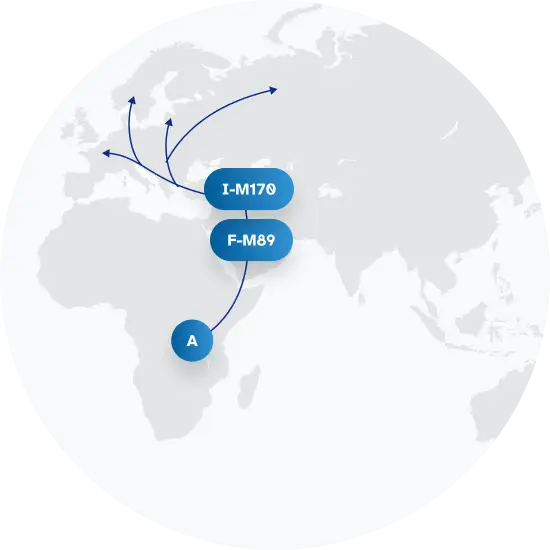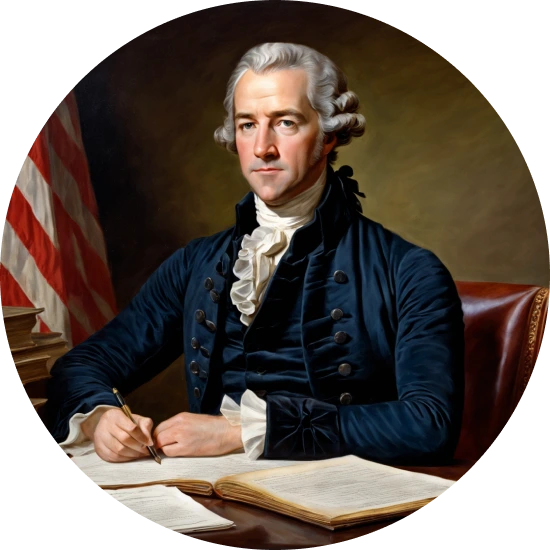Explore the Family Name Stanford
How common is the last name Stanford in the United States?
Based on the Decennial U.S. Census, the popularity of the surname Stanford saw minor fluctuations between 2000 and 2010. In the year 2000, Stanford ranked as the 1601st most popular surname, however, it slipped to the 1692nd position in 2010, marking a decline of 5.68%. Despite this shift in rank, the count of individuals bearing the Stanford name increased from 20,610 in 2000 to 21,295 in 2010, showing a growth rate of 3.32%. The proportion of people with the Stanford surname per 100,000 also decreased from 7.64 to 7.22 during this period.
| 2000 | 2010 | Change | |
|---|---|---|---|
| Rank | #1,601 | #1,692 | -5.68% |
| Count | 20,610 | 21,295 | 3.32% |
| Proportion per 100k | 7.64 | 7.22 | -5.5% |
Race and Ethnicity of people with the last name Stanford
When looking at the ethnic identity associated with the Stanford surname, based on data from the Decennial U.S. Census, there were noticeable changes between 2000 and 2010. The largest increases were seen within the Asian/Pacific Islander and Hispanic communities, with their share of the Stanford surname growing by 48.72% and 46.01% respectively. Meanwhile, those identifying as two or more races also saw an increase of 22.99%. The percentage of Stanfords identifying as White decreased slightly from 73.37% to 71.25%, while the proportion of Black individuals with the Stanford surname grew modestly from 22.34% to 23.04%. The American Indian and Alaskan Native representation also increased from 0.53% to 0.61%.
| 2000 | 2010 | Change | |
|---|---|---|---|
| White | 73.37% | 71.25% | -2.89% |
| Black | 22.34% | 23.04% | 3.13% |
| Hispanic | 1.63% | 2.38% | 46.01% |
| Two or More Races | 1.74% | 2.14% | 22.99% |
| American Indian and Alaskan Native | 0.53% | 0.61% | 15.09% |
| Asian/Pacific Islander | 0.39% | 0.58% | 48.72% |
Stanford ancestry composition
23andMe computes an ancestry breakdown for each customer. People may have ancestry from just one population or they may have ancestry from several populations. The most commonly-observed ancestry found in people with the surname Stanford is British & Irish, which comprises 54.3% of all ancestry found in people with the surname. The next two most common ancestries are French & German (21.9%) and Eastern European (3.8%). Additional ancestries include Scandinavian, Nigerian, Spanish & Portuguese, Italian, and Ghanaian, Liberian & Sierra Leonean.
Ready to learn more about your ancestry? Get the most comprehensive ancestry breakdown on the market by taking our DNA test. Shop 23andMe
| ANCESTRY BREAKDOWN | COMPOSITION |
|---|---|
| British & Irish | 54.3% |
| French & German | 21.9% |
| Eastern European | 3.8% |
| Other | 20.0% |

Possible origins of the surname Stanford
Your DNA provides clues about where your recent ancestors may have lived. Having many distant relatives in the same location suggests that you may all share common ancestry there. Locations with many distant relatives can also be places where people have migrated recently, such as large cities. If a large number of individuals who share your surname have distant relatives in a specific area, it could indicate a connection between your surname and that location, stemming from either recent ancestral ties or migration.
Based on 23andMe data, people with last name Stanford have recent ancestry locations all within the United Kingdom of Great Britain and Northern Ireland.
| RECENT ANCESTRY Location | Percentage |
|---|---|
| Greater Manchester, United Kingdom | 86.50% |
| Greater London, United Kingdom | 86.50% |
| Glasgow City, United Kingdom | 86.30% |
| West Midlands, United Kingdom | 86.10% |
| Tyne And Wear, United Kingdom | 86.10% |
What Stanford haplogroups can tell you
Haplogroups are genetic population groups that share a common ancestor on either your paternal or maternal line. These paternal and maternal haplogroups shed light on your genetic ancestry and help tell the story of your family.
The top paternal haplogroup of people with the surname Stanford is I-Z138, which is predominantly found among people with European ancestry. Haplogroup I-Z138 is descended from haplogroup I-M170. Other common haplogroups include R-P311 and R-CTS241, which are predominantly found among people with European and European ancestry. Other surnames with similar common haplogroups are: Butcher, Perkins, Cruse, Haskins, Rollins, Steele, Michael, Haywood, Pryor, Slack.
The most common maternal haplogroups of people with Stanford surname are: H1, T2b, H. These most commonly trace back to individuals of European ancestry.
 Paternal Haplogroup Origins I-M170
Paternal Haplogroup Origins I-M170
Your paternal lineage may be linked to Alexander Hamilton
Early in the morning on July 11, 1804, Aaron Burr (then Vice President of the United States) and Alexander Hamilton (founder of the U.S. Treasury) dueled on the New Jersey side of the Hudson River. This marked the culmination of a bitter personal and political rivalry between the two men. Alexander Hamilton died as a result of the duel, but his intellectual legacy survives in the founding documents of the nation he helped build. A piece of his genetic legacy survives as well: in the 21st century, genealogists documented the paternal haplogroups of dozens of Hamilton's living descendants and concluded that the Founding Father's paternal haplogroup was a branch of I-DF29.
Your maternal lineage may be linked to Marie Antoinette
Because it is so dominant in the general European population, haplogroup H also appears quite frequently in the continent's royal houses. Marie Antoinette, an Austrian Hapsburg who married into the French royal family, inherited the haplogroup from her maternal ancestors. So did Prince Philip, Duke of Edinburgh, whose recorded genealogy traces his female line to Bavaria. Scientists also discovered that famed 16th century astronomer Nicolaus Copernicus traced his maternal lineages to haplogroup H.

What do people with the surname Stanford have in common?
Spoiler alert: it's complicated. People with the same last name are usually no more genetically similar than a randomly sampled group of people from the same population. That said, people with the same surname are more likely to have similar ancestries than randomly sampled individuals. The reason is the tendency of people with similar cultural or geographical backgrounds to preferentially mate with one another. That's why people who share a surname may be more likely to share traits and tendencies in common than people within the general population. Check out the percentages below to see the prevalences of tastes, habits, and traits of people with your surname compared with prevalences among 23andMe users.
Preferences
Traits
Habits
Wellness
Are health conditions linked to the last name Stanford?
The short answer is that, if there is an association between surname and health, it's usually more about your ancestry than your name. Individuals with a given surname are no more genetically similar than the general population but often have similar ancestries. The populations of people associated with those shared ancestries often have sets of genetic variations, also known as alleles, in common. Some of those alleles are associated with a greater likelihood of developing certain diseases.
Disease variant frequency by ancestry
Disease allele frequencies in populations associated with the surname Stanford are shown below. Important Note: not everyone with a disease allele will develop these health condition
























